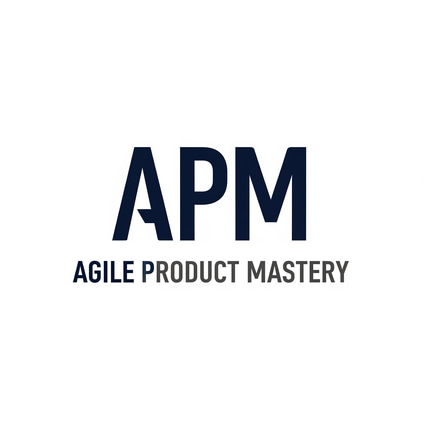Navigating the Agile Landscape: Challenges Faced by Product Owners and Effective Solutions
Product Owners sit at the heart of Agile delivery—but the path is rarely smooth. This post unpacks the key challenges they face and shares strategic, experience-driven solutions to help POs lead with clarity, influence, and impact in dynamic environments.
PRODUCT OWNER CHALLENGESAGILE PRODUCT MANAGEMENT
Written by: Matt Gregory - Founder Agile Product Mastery
5/27/20255 min read


Understanding the Role of a Product Owner
The role of a Product Owner is central to the success of an Agile team, serving as a pivotal link between stakeholders and development teams. This position entails a multifaceted responsibility, where the Product Owner is expected to define a compelling product vision that aligns with both stakeholder objectives and user needs. By articulating this vision clearly, the Product Owner lays the groundwork for the development team to create valuable solutions that resonate with the market.
One of the primary responsibilities of the Product Owner is to prioritize the product backlog effectively. This involves a delicate balance of addressing immediate user needs while also considering long-term business goals. The backlog should reflect the most valuable features and enhancements, enabling the team to focus on what delivers the most impact. A well-maintained product backlog not only streamlines workflow but also helps in setting clear expectations among all parties involved.
Additionally, the Product Owner must excel in communication, being adept at conveying ideas and feedback from stakeholders to the development team and vice versa. This two-way communication is crucial for maintaining alignment throughout the project lifecycle. Strong negotiation skills come into play when balancing stakeholder demands against the team's capacity and technical feasibility. Thus, effective stakeholder management becomes essential, as the Product Owner must navigate competing interests while fostering a collaborative environment.
To be successful in this role, a Product Owner should possess a combination of technical understanding, business acumen, and interpersonal skills. By embracing these competencies, they can effectively address challenges, drive product development, and ensure that the team adheres to Agile principles. A well-rounded Product Owner ultimately enhances the product's potential for success in a competitive landscape.
Common Challenges Faced by Product Owners
Product Owners play a pivotal role in Agile environments, often navigating a landscape rife with challenges that can significantly impact project outcomes. One of the most prevalent issues is balancing stakeholder demands with team capacity. Stakeholders typically have high expectations and a multitude of requests, which can lead to pressure on the Product Owner to prioritize conflicting interests. For instance, a situation may arise where a significant feature requested by management could potentially disrupt the team's current workflow, leading to delays in delivering already committed functionalities.
Moreover, managing changing requirements is an integral aspect of a Product Owner's responsibilities. Agile methodologies emphasize flexibility; however, frequent shifts in user needs and market conditions can lead to chaos if not managed effectively. For example, a Product Owner may find that a critical feature is rendered obsolete due to a sudden change in market trends, necessitating quick pivots in strategy. Failure to adapt promptly can derail project timelines and undermine team morale.
Another challenge faced by Product Owners involves ensuring effective collaboration among team members. With diverse roles contributing to the project, miscommunication can lead to misunderstandings and incomplete work. Real-world scenarios highlight that inadequate collaboration can result in duplicated efforts or diverging goals, which hinder overall project progress.
Lastly, the struggle to maintain a prioritized and transparent backlog is a common hurdle. A well-defined backlog is essential for guiding team efforts, yet maintaining clarity and priority can become convoluted, especially amidst evolving project demands. This challenge can prevent teams from delivering maximum value to stakeholders efficiently. Therefore, recognizing and addressing these challenges is crucial for Product Owners aiming to foster successful Agile project outcomes.
Strategies to Overcome Challenges
Product Owners often encounter multifaceted challenges in their roles, particularly within the Agile framework. However, a range of actionable strategies can be employed to effectively navigate these obstacles. One vital approach is fortifying stakeholder engagement. Prioritizing regular interactions with stakeholders fosters a collaborative environment where expectations are clearly communicated and alignment on project objectives is maintained. Utilizing structured methodologies like Scrum or Kanban allows Product Owners to manage the backlog efficiently, ensuring that priority items are visible and actionable, ultimately optimizing workflow.
Another critical aspect is the promotion of open communication within Agile teams. Encouraging team members to voice concerns and ideas cultivates a culture of trust and innovation. Regular stand-up meetings can serve as an excellent platform for discussing progress and identifying roadblocks in real time. Additionally, employing visual management tools such as boards or dashboards makes it easier to monitor tasks and performance, facilitating smoother adjustments to workflows when necessary.
Embracing flexibility is essential in the dynamic landscape of Agile development. Change is inevitable, and being adaptable to shifting requirements enables Product Owners to pivot effectively without derailing project timelines. Implementing a feedback loop with both the team and stakeholders ensures that changes are systematically integrated and aligned with overall goals.
Continuous learning plays a pivotal role in the growth of Product Owners. Investing time in professional development through training, workshops, and engaging with Agile communities can enhance knowledge and skills. Additionally, there are a multitude of tools and resources available, such as project management software and analytical tools, which can support the decision-making process and increase productivity. By leveraging these strategies, Product Owners can significantly improve their effectiveness and drive successful project outcomes in the Agile environment.
The Future of the Product Owner Role in Agile
As organizations increasingly adopt Agile methodologies, the role of the Product Owner is evolving in response to new market conditions and technological innovations. One of the most significant trends shaping this evolution is the growing reliance on data-driven decision-making. Product Owners must now be adept at analyzing metrics and leveraging insights gleaned from data to inform their strategies and prioritization. This shift not only enhances product development but also empowers teams to create value for customers more effectively, thereby necessitating a strong grasp of analytical tools and methodologies.
Additionally, the rise of remote work has transformed collaboration and communication dynamics within Agile teams. With team members often dispersed across various locations, Product Owners must cultivate skills in virtual communication and project management tools to ensure efficiency and clarity in their roles. This shift also prompts an examination of how to maintain a cohesive team culture and effective collaboration in a non-traditional work environment. Agile ceremonies, traditionally conducted in-person, may require adaptations to facilitate engagement and participation through digital platforms.
Moreover, as technology continues to advance at a rapid pace, Product Owners are required to possess a certain level of technical knowledge. This shift emphasizes not only the need to understand the technology behind their products but also the ability to interact effectively with development teams and stakeholders. Proficiency in current technologies enables Product Owners to make informed decisions, prioritize features that align with technical capabilities, and communicate effectively about product roadmaps.
In light of these changes, fostering leadership qualities and agile mindsets is essential for future success in the role of Product Owner. Embracing adaptability, emotional intelligence, and strategic vision will equip Product Owners to navigate the complexities of the Agile landscape. Those who can effectively combine technical understanding with strong leadership will be best positioned to thrive amidst the challenges of product ownership in the evolving marketplace.
Ready to master your Product Owner journey?
Grab your copy of Agile Product Mastery: The Product Owner's Playbook to Strategy, Execution & Influence and take your skills to the next level.
© Agile Product Mastery — Build a career that scales. Not one that burns out.
Powered by Baltimore Advisory Pty Ltd — ABN 97 678 312 475 — All rights reserved
Follow us on LinkedIn
